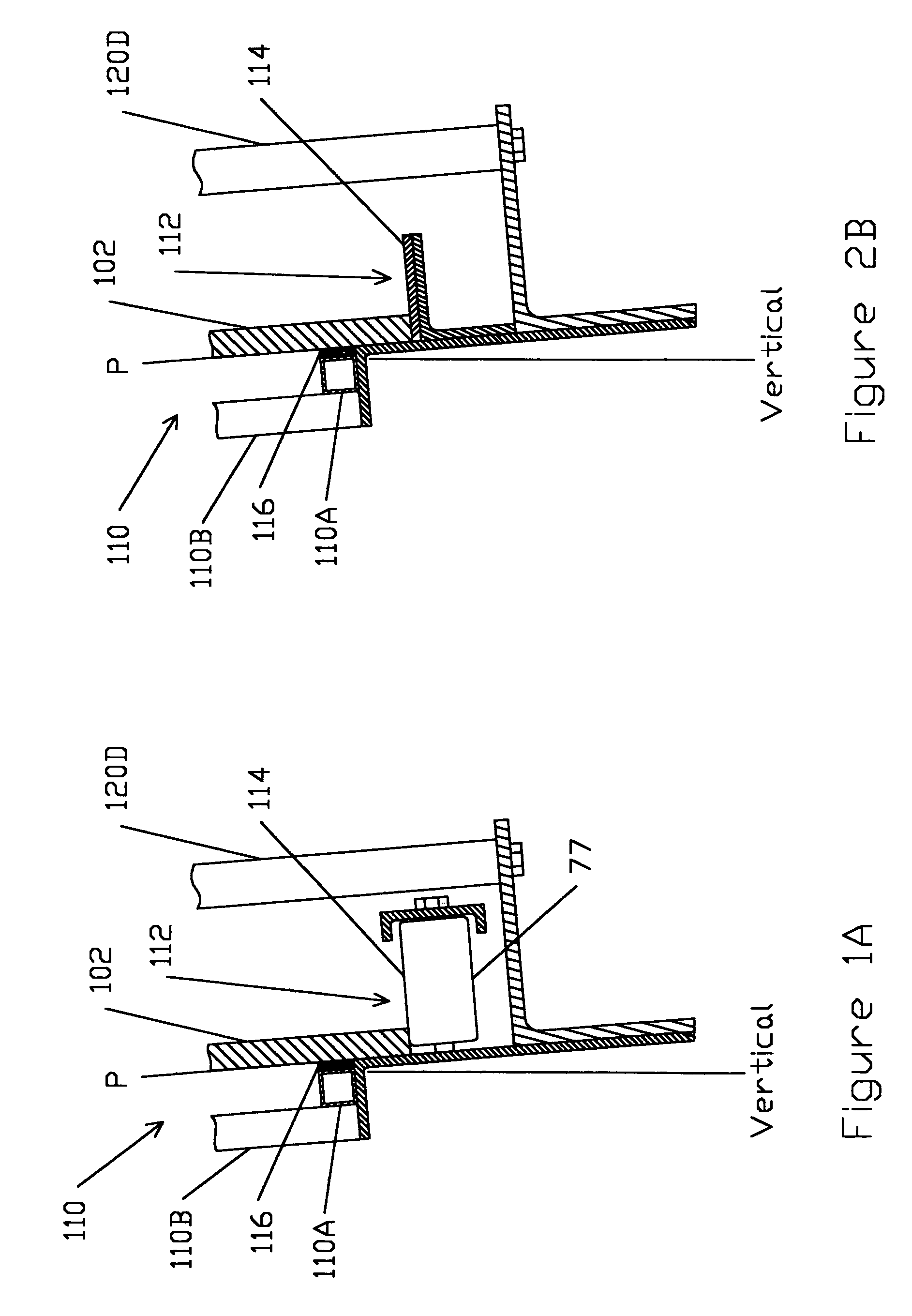Multi-axis panel saw
a multi-axis, panel saw technology, applied in the direction of metal sawing devices, metal sawing accessories, manufacturing tools, etc., can solve the problems of dangerous activity, dangerous situation, and kick-back of material towards the operator, so as to prevent an overload of the cutting motor
- Summary
- Abstract
- Description
- Claims
- Application Information
AI Technical Summary
Benefits of technology
Problems solved by technology
Method used
Image
Examples
Embodiment Construction
[0049]FIGS. 1 and 1A disclose a front view and a partial section view respectively of a first panel saw assembly 100 consistent with the invention. The panel saw may be used to cut panelized material 102. Panelized material 102 may have a length, a width, and a thickness, with the thickness typically being substantially less than either the length or width. Known panelized material includes, but is not limited to, plywood, medium density fiber board, particle board, lauan, and wafer board in thickness from ¼″ to 1,″ and even thicker. The panelized material 102 is typical manufactured in four foot by eight foot sheets, but other sizes, both larger and smaller, including sub-sheets may be cut. The panel saw assembly 100 is useful for machining panelized material 102 into smaller generally rectangular pieces.
[0050]The panel saw assembly 100 may have a frame 110 with a guide shelf 112 having a longitudinal axis LA extending along a lower edge of the frame 110. The lower edge of the pane...
PUM
| Property | Measurement | Unit |
|---|---|---|
| thickness | aaaaa | aaaaa |
| thickness | aaaaa | aaaaa |
| sizes | aaaaa | aaaaa |
Abstract
Description
Claims
Application Information
 Login to View More
Login to View More - R&D
- Intellectual Property
- Life Sciences
- Materials
- Tech Scout
- Unparalleled Data Quality
- Higher Quality Content
- 60% Fewer Hallucinations
Browse by: Latest US Patents, China's latest patents, Technical Efficacy Thesaurus, Application Domain, Technology Topic, Popular Technical Reports.
© 2025 PatSnap. All rights reserved.Legal|Privacy policy|Modern Slavery Act Transparency Statement|Sitemap|About US| Contact US: help@patsnap.com



